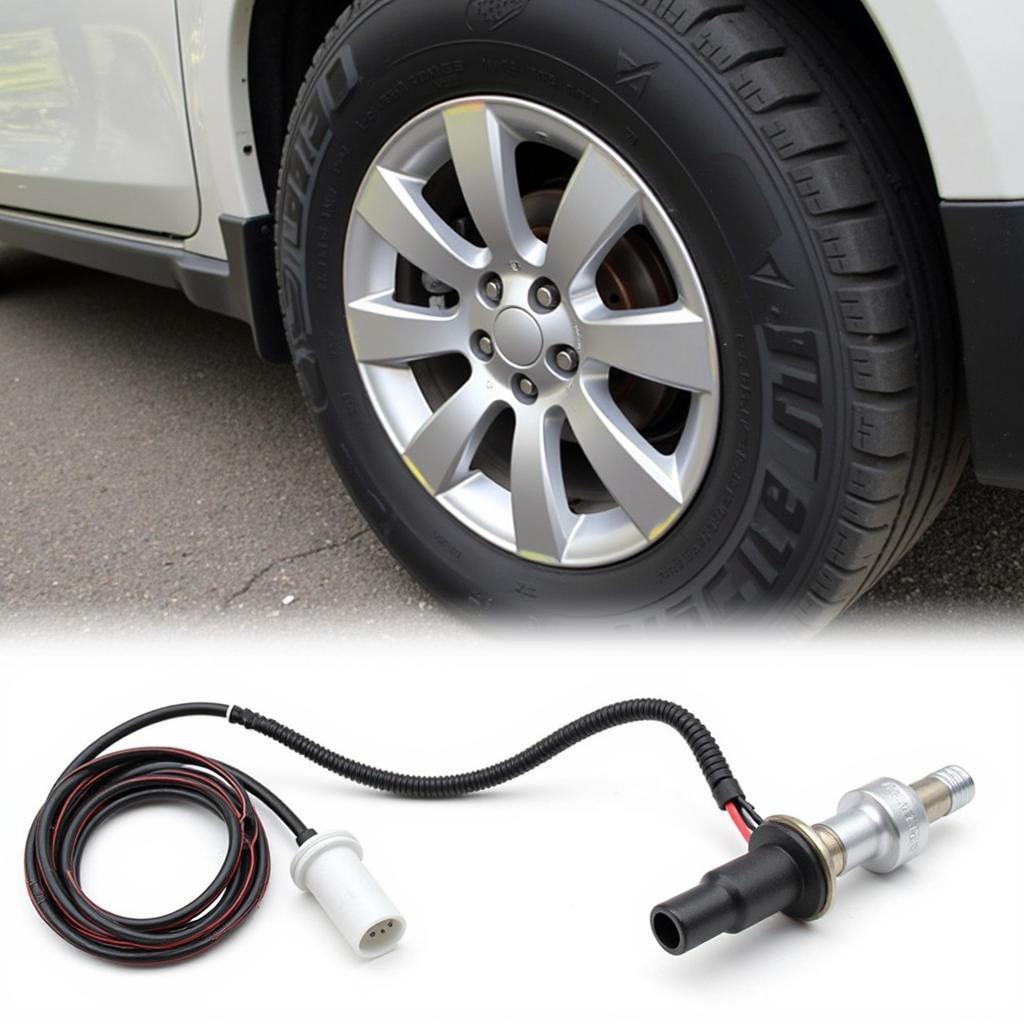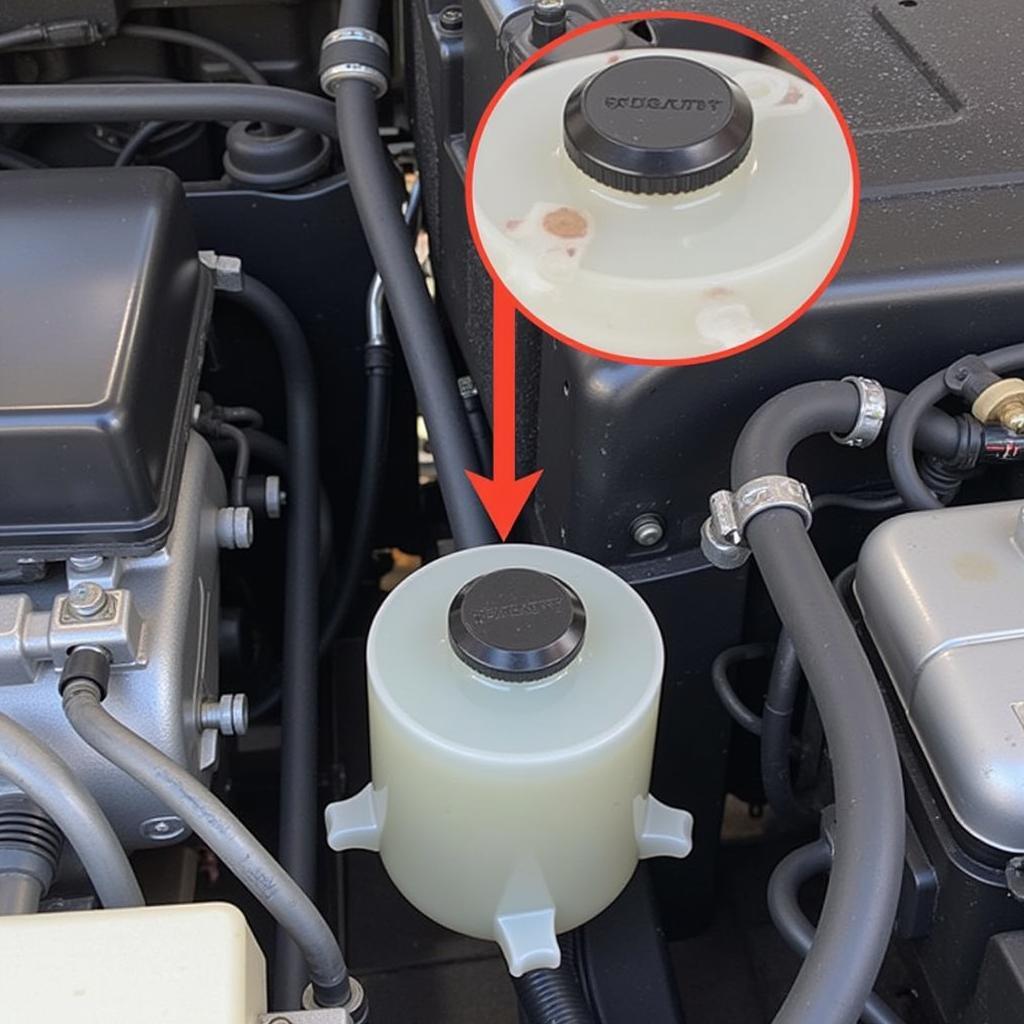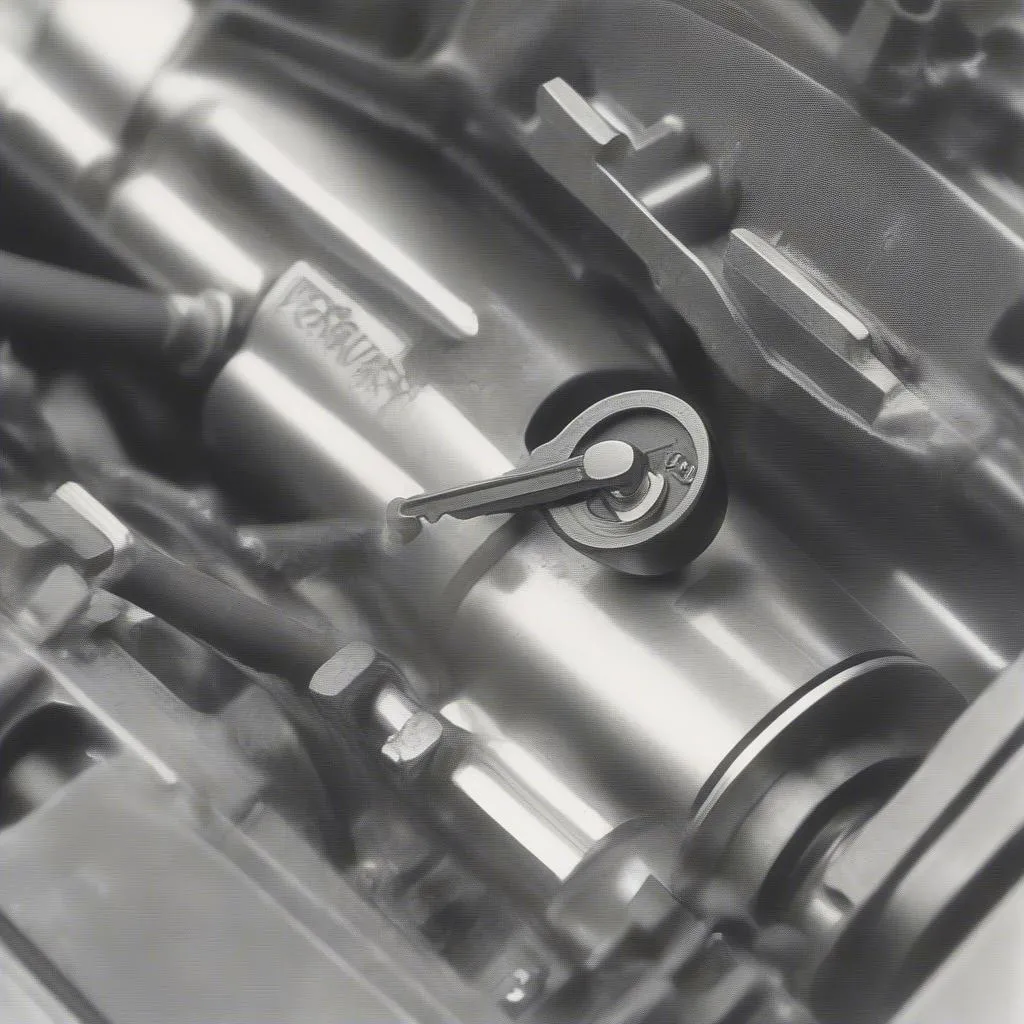The Subaru Outback is a reliable and popular vehicle known for its safety features. However, even the most dependable cars can experience issues, and one common problem Outback owners may encounter is the dreaded brake warning light illuminating on the dashboard. This light serves as a critical indicator of potential issues within your braking system, ranging from minor to serious.
This comprehensive guide delves into the common causes behind a Subaru Outback brake warning light and provides insightful solutions to help you get back on the road safely.
Understanding Your Subaru Outback’s Brake System
Before we dive into the causes and solutions, it’s helpful to have a basic understanding of how your Outback’s brake system functions. This system relies on hydraulic pressure to engage the brakes when you press the pedal. Key components include:
- Brake Pedal: This is where you, the driver, initiate the braking action.
- Brake Booster: This component amplifies the force you apply to the brake pedal, making braking easier.
- Master Cylinder: When you press the brake pedal, the master cylinder generates hydraulic pressure.
- Brake Lines: These lines carry the pressurized brake fluid to the wheels.
- Brake Calipers and Pistons: These components squeeze the brake pads against the rotors to slow or stop the vehicle.
- Brake Pads and Rotors: Brake pads are designed to create friction against the rotors, generating the stopping force.
Common Causes of a Subaru Outback Brake Warning Light
1. Low Brake Fluid Level
One of the most frequent culprits behind a glowing brake warning light is a low brake fluid level. As brake pads wear down, the brake fluid level in the reservoir naturally decreases.
Solution: Park your Outback on a level surface and inspect the brake fluid level in the reservoir. If it’s below the minimum mark, add the correct type of brake fluid for your Outback’s model year.
2. Worn Brake Pads
Brake pads have wear indicators that emit a high-pitched squealing sound when they become too thin. This sound means it’s time for a brake pad replacement.
Solution: Have your brake pads inspected by a qualified mechanic. If they are worn beyond the recommended limit, replace them.
 Worn brake pads on a Subaru Outback
Worn brake pads on a Subaru Outback
3. Brake Fluid Leak
A leak in your Outback’s brake lines, calipers, or wheel cylinders can lead to a dangerous drop in brake fluid pressure.
Solution: Carefully inspect all visible brake components for signs of leaks, such as wet spots or drips. If you suspect a leak, seek immediate professional assistance.
4. Faulty Brake Light Switch
In some instances, a malfunctioning brake light switch can trigger the brake warning light. This switch is typically located near the brake pedal and signals the brake lights to illuminate when you press the pedal.
Solution: A faulty brake light switch will need to be replaced.
5. ABS (Anti-lock Braking System) Issue
If there’s a problem with your Outback’s ABS, a separate warning light may illuminate on the dashboard in addition to the brake warning light.
Solution: Diagnosing ABS issues typically requires specialized scanning tools, so it’s best to consult a qualified mechanic or dealership.
 Subaru Outback ABS sensor and wiring harness
Subaru Outback ABS sensor and wiring harness
6. Emergency Brake Engaged
It may seem obvious, but sometimes the brake warning light illuminates simply because the parking brake, also known as the emergency brake, is partially or fully engaged.
Solution: Check your parking brake lever to ensure it’s fully released.
What to Do When the Subaru Outback Brake Warning Light Comes On
1. Assess the Situation
If your brake warning light comes on, pull over to a safe location as soon as possible.
2. Check the Parking Brake
Ensure your parking brake is fully released.
3. Inspect Brake Fluid Level
Carefully check the brake fluid level in the reservoir. If it’s low, add the appropriate brake fluid.
4. Look for Visible Leaks
Examine the area around your Outback’s wheels and under the vehicle for any signs of brake fluid leaks.
5. Call for Assistance
If you notice a leak, your brake fluid is excessively low, or you suspect a more serious issue, do not attempt to drive your Outback. Contact a qualified mechanic or towing service.
 Subaru Outback brake fluid reservoir
Subaru Outback brake fluid reservoir
Subaru Outback Brake Warning Light FAQs
Q: Can I drive my Subaru Outback with the brake warning light on?
A: It is strongly advised against driving your Outback with the brake warning light on, as it indicates a potential problem with your braking system. Doing so could jeopardize your safety and that of others.
Q: How often should I get my Subaru Outback’s brakes inspected?
A: It’s generally recommended to have your brakes inspected annually or every 12,000 miles, whichever comes first.
Q: How long do Subaru Outback brakes typically last?
A: The lifespan of brake pads and rotors varies depending on driving habits and conditions. On average, brake pads last between 30,000 and 70,000 miles, while rotors can last for 50,000 miles or more.
Q: Is it safe to add brake fluid myself?
A: If you’re comfortable under the hood, adding brake fluid is a relatively straightforward process. However, it’s crucial to use the correct type of brake fluid specified in your owner’s manual.
Q: Can I prevent my Subaru Outback brake warning light from coming on?
A: While you can’t entirely prevent brake wear, following a regular maintenance schedule that includes brake inspections can help identify issues early on.
Conclusion
Addressing a Subaru Outback brake warning light promptly is essential for maintaining your safety on the road. While some causes may be minor and easily addressed, others require the expertise of a qualified mechanic. Regular maintenance and a proactive approach to brake system health will keep your Outback stopping safely and reliably for miles to come.

